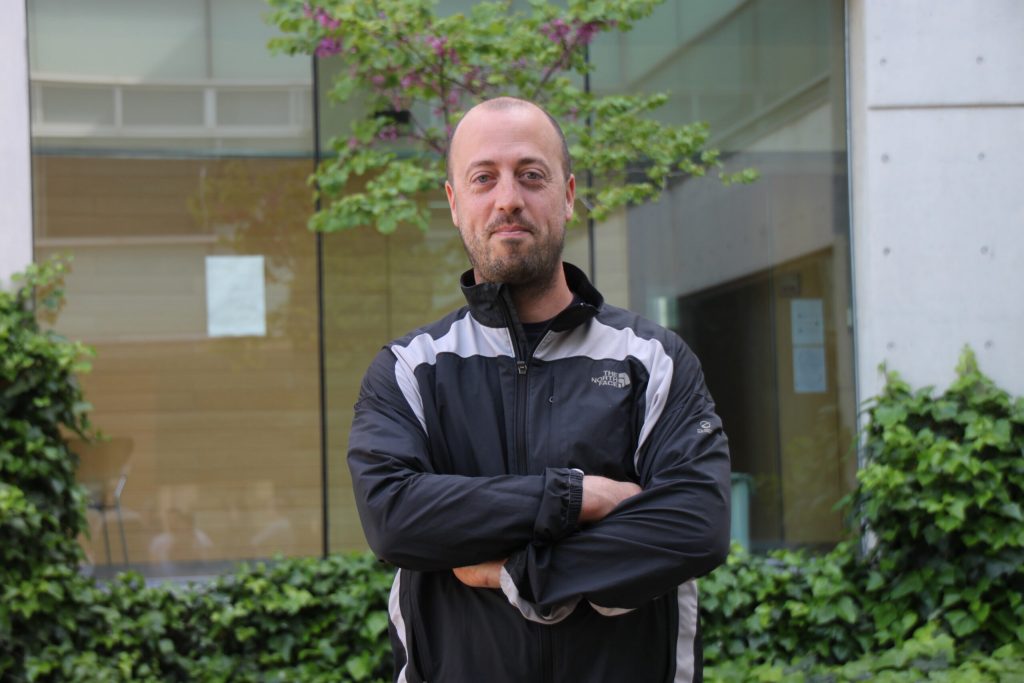13/12/2022
An effective therapeutic strategy against a subtype of melanoma that is currently untreatable has been found
The URV-IISPV researcher Òscar Yanes has taken part in this research, which aims to improve the response of these cancer cells to a treatment that is already used for other illnesses

The URV-IISPV researcher Òscar Yanes has taken part in this research, which aims to improve the response of these cancer cells to a treatment that is already used for other illnesses
Melanoma is a complex and heterogeneous disease in which the response to treatment is limited, especially in some subtypes of tumours. A study led by the group for Biomedical Research into Melanoma at the Vall d’Hebron Research Institute (VHIR), in which the URV has also taken part, has identified a strategy that improves the response of melanoma cells to an existing treatment. Published in Nature Communications, the study was carried out in collaboration with the Dermatology Service of the Vall d’Hebron University Hospital, the Breast Cancer and Melanoma Group of the Vall d’Hebron Institute of Oncology (VHIO), the Bellvitge Biomedical Research Institute (IDIBELL) and the Pere Virgili Health Research Institute (IISPV).
One of the most common subtypes of melanoma is caused by mutations to NRAS, a protein related to cell malignancy that is altered in 25% of cases. It is difficult to treat at present because therapies against NRAS cannot be developed. “In this study, we provide insight into the role that NRAS plays in melanoma, which is essential if we are to find therapeutic strategies against this subtype of tumour,” explains Juan Ángel Recio, head of the group for Biomedical Research into Melanoma at VHIR.
In the study, the researchers examined the characteristics of melanoma cell metabolism. Tumours need to consume a lot of glucose to obtain energy but, above all, to manufacture components such as proteins or nucleic acids and generate a new cell. In the case of NRAS-mutated melanoma, Òscar Yanes, a researcher from the URV’s Department of Electronic, Electrical and Automatic Engineering, used metabolomic techniques to demonstrate that they are more dependent on glucose than other subtypes, as they find it difficult to use other alternative energy sources to make up for the lack of glucose.

The results of the study show that, when glucose is removed from the environment, the cells of this subtype of melanoma activate survival signalling pathways that are different from those activated under normal conditions. One of the proteins activated in this situation is BRAF, which enables cells to function normally despite adverse conditions. They also show that, under these conditions, the drug sorafenib, which has been used for years with other diseases, can inhibit this mechanism and, therefore, prevent cell survival. “By eliminating glucose, we ensure that melanoma cells become sensitive to treatment with sorafenib and die very quickly,” say Juan Ángel Recio and Kimberley McGrail, a researcher from the group for Biomedical Research into Melanoma. “So we can use existing drugs, which facilitate and speed up treatment since, in the case of sorafenib, it has already been approved for use in humans,” she adds.
Finally, the research also analysed the effect of this strategy on animal models in which tumour cells from patients were implanted. In this case, to simulate the lack of glucose in tumour cells, a compound was used that mimics glucose, but which cannot be metabolised in the same way and blocks its use. As tumour cells need more energy than healthy cells, they have a greater tendency to capture glucose so they also capture more of this compound that simulates the lack of glucose. It has been confirmed that, when sorafenib is administered together with this substance, the tumour in mice gets smaller and, in some cases, may even disappear. “For it to be used in humans, some strategies have already been tested in clinical studies in which it reduces the consumption of glucose in the tumour; the next step will be to test this combination in humans,” concludes Recio.
